- Home
- Walter Moers
The City of Dreaming Books Page 5
The City of Dreaming Books Read online
Page 5
Kibitzer ran his forefinger along the edges of the sheets. ‘Unevenly trimmed. A nick every five millimetres at least. The guillotine was already obsolete, probably a Threadcutter dating from the century before last. The watermark was applied with cuttlefish ink, from which I infer that—’
‘Perhaps you should read it,’ I ventured to suggest.
‘Eh?’ Kibitzer seemed to awaken from a trance and stared at the first page for a long time. He was probably marvelling, just as I had, at the manuscript’s calligraphic beauty. At last he proceeded to read it.
After a few moments he began to hum to himself like someone reading a score, as if I weren’t there at all. He emitted several hoarse laughs, cried ‘Yes, yes, exactly!’ and made an extremely agitated impression. What followed might have been an imitation of my own response to the text at Lindworm Castle. He alternated abruptly between paroxysms of laughter and floods of tears, fought for breath, smote his brow with the flat of his hand, and gave vent to repeated cries of approval and delight: ‘Yes indeed! Yes! How true! It’s so . . . so perfect!’ Then he lowered the manuscript and sat staring into the gloom for several minutes, utterly motionless.
I took the liberty of clearing my throat. Kibitzer gave a start and gazed at me with his big, glowing eyes. Their amber-coloured irises were quivering.
‘Well?’ I asked. ‘Do you know who the author is?’
‘It’s fantastic,’ he muttered.
‘I know. Whoever wrote it is a literary giant.’
Kibitzer handed the manuscript back, his eyes narrowing to slits. The whole shop seemed to grow darker.
‘You must leave Bookholm,’ he whispered. ‘You’re in mortal danger!’
‘What?’
‘Kindly leave these premises! Return to Lindworm Castle at once! Go anywhere you like, but get out of this city at all costs! Don’t stay at a hotel on any account! Show no one else this manuscript - no one, understand? Destroy it! Make good your escape from Bookholm as soon as possible!’
Every one of these recommendations was the diametrical opposite of what I really intended. In the first place I should have liked to spend a little longer in the shop and chat with the kindly Nocturnomath. Secondly, I was delighted to have shaken the dust of Lindworm Castle off my feet and was damned if I’d go back there so soon. Thirdly, I would naturally return to my hotel at some stage because I’d left my things there. Fourthly, I had every intention of showing the manuscript to anyone who cared to read it. Fifthly, I would never, of course, destroy the most flawless piece of writing I’d ever set eyes on. And, sixthly, I had no wish to leave this magnificent city, which promised to be the fulfilment of all my dreams. Before I could utter even one of my rejoinders, however, the gnome had hustled me out of the shop.
‘Please take my advice!’ he whispered as he thrust me out of the door. ‘Leave the city as soon as possible! Goodbye - no, farewell for ever! Hurry! Escape while you still can! And steer clear of the Triadic Circle!’
Then he slammed the door, bolted it from the inside and hung a ‘Closed’ sign in the window. The shop’s interior became even darker than before.
Colophonius Regenschein
I roamed the surrounding streets in a daze. Thanks to the homeless and exhausted condition in which I now found myself, dear readers, these emotional ups and downs had proved too much for me. First the distressing reminder of Dancelot, then Kibitzer’s hospitable reception and finally his brusque dismissal . . . What an unrefined, wizened little prune of a fellow he was!
I knew that antiquarian booksellers, and especially the Bookholmians among them, were given to eccentric behaviour - indeed, their professional reputation depended on it, so to speak. But what had Kibitzer meant when he told me to avoid the Triadic Circle? Had he been referring to the sign on his door? He was probably just an oddball afflicted by extreme mood swings - and no wonder, if he persisted in reading Professor Abdul Nightingale’s crack-brained writings!
I strove to shake off my recollection of the incident by planning my future course of action. First I needed to know more about this city and its unwritten laws. I needed a guidebook and a street map - even, if such a thing existed, a printed list of the conventions to be observed when visiting antiquarian bookshops. It was possible that I had unwittingly broken certain rules peculiar to Bookholm.
While debating these points I recalled the shop window containing Colophonius Regenschein’s Catacombs of Bookholm, a work that was said to plumb the city’s mysteries. I resolved to acquire the book and digest its contents over a few cups of coffee in some well-heated café. By so doing I could become an expert on Bookholm overnight and kill time without having to spend it in the dubious company of the white bat and the rampaging Bluddums in the Golden Quill. I would collect my things in the morning and change hotels.
It didn’t take me long to find the bookshop again. The book was still in the window, so I paid the paltry sum it cost, bought a street map and antiquarian guide as well, and bore my acquisitions off to a nearby coffee shop. A nocturnal reading was in progress, which meant that every half-hour some wretched poet would mount a table and deliver a recitation for which he would, at Lindworm Castle, have been tarred, feathered and hurled from the battlements.
I stood marvelling for a long time in front of a blackboard on which all the delicious fare one could order was listed in chalk. I was bewildered by the abundance of food and drink bearing names with literary associations: Printer’s Ink Wine and Blood and Thunder Coffee; Sweetpaper Sandwiches (they could be not only eaten but written on); Muse’s Kiss Cocoa and Liquid Inspiration (the latter a brutally high-proof spirit); Horror Candies (to be eaten while reading thrillers, many of them with surprise fillings of vinegar, cod liver oil or desiccated ants); and seventeen types of pastries named after various classical poets, for example, Bethelzia B. Binngrow Buns and Ardelf Nennytos Cookies. Those in need of more substantial fare could gorge themselves on dishes named after popular novelists or their heroes, for instance Prince Sangfroid Pie or Risotto à la Evsko Dosti, but there was also a light Syllabic Salad incorporating alphabet spaghetti and trombophone mushrooms. It was enough to make your head spin.
Having pulled myself together at last, I ordered a big jug of Midnight Oil Espresso and a pastry known as a Poet’s Ringlet. Then I retired to a table right beside the crackling stove in the furthest corner of the establishment. I took a swig of coffee and a bite of my delicious Poet’s Ringlet, got out The Catacombs of Bookholm and began to read.
A dwarf with an unpleasantly shrill voice was reading out a long-winded essay on his aversion to sponges, not that this impaired my concentration too much. If what I am reading has the power to grip me, I can read under the most difficult circumstances.
And The Catacombs of Bookholm surpassed my expectations in every respect. The book was not only informative but enthralling, and of a literary quality unusual in a work of non-fiction. After only a few paragraphs the dwarf’s frightful voice became mere background noise and little more intrusive than the twittering of a bird. Meanwhile, eager to plumb Bookholm’s amazing mysteries, I was descending into its hopelessly convoluted labyrinth of tunnels in the company of Colophonius Regenschein, the city’s greatest Bookhunter and hero.
Regenschein hadn’t always been Bookholm’s greatest Bookhunter, dear readers. Oh no, there had even been a time when his name wasn’t Colophonius Regenschein at all. A resounding pseudonym was part of every Bookhunter’s stock in trade and Regenschein differentiated himself from his colleagues at the very outset by choosing one with no warlike connotations.
His real name was Taron Trekko and he was just a roaming Vulphead whose travels had brought him to the City of Dreaming Books quite by chance. Indeed, literature had meant nothing to him at first. Like most Vulpheads, Trekko possessed a prodigious memory and used that gift to earn a living in taverns by multiplying hundred-digit numbers in his head while juggling with raw eggs. However, he happened to arrive in Bookholm just as a dispute broke out between
the adherents of druidical arithmetic and Old Zamonian mathematics. This divided the population of Zamonia into two irreconcilably hostile camps. The result was that mass brawls occurred nearly every time a ‘memory artiste’ put on a show, so a Vulphead had only to put his nose round a taproom door for the landlord to hurl a jug at him.
Thus, Taron Trekko found himself threatened with starvation in the midst of a city filled with taverns patronised by folk eager for entertainment, but he soon discovered a far more lucrative way of making money than performing numerical tricks for drunks, namely, dealing in rare books. This was no brilliant feat of deduction on his part, given that nearly everyone in Bookholm dealt in books. However, there existed some particularly rare specimens for which demand never waned. These were the books on the Golden List. The volumes on this list could not be purchased in any of the city’s antiquarian bookshops. Very seldom offered for sale and promptly snapped up by wealthy collectors bidding in competition, they were literary legends coveted by all, rather like the gigantic diamond reputed to lie hidden in the heart of Lindworm Castle.
One particular type of adventurers - they were known as Bookhunters - had specialised in running these precious works to earth in the bowels of Bookholm and bringing them to the surface. Many Bookhunters were hired by collectors or dealers, others went prospecting on their own account. The sums offered for volumes on the Golden List were so astronomical that a single specimen could make a Bookhunter wealthy for life.
It was a dangerous occupation - the most dangerous in all Bookholm. You, my courageous readers, may conceive of going in search of some book as an antiquarian’s boring spare-time hobby, but here in the depths of this mysterious city it was more perilous than hunting Crystalloscorpions in the glass grottoes of Demon Range. Why? Because the catacombs of Bookholm teemed with dangers of a very special kind.
The labyrinthine tunnels were said to be connected to Netherworld, the mysterious Realm of Evil reputed to extend beneath the whole of Zamonia. According to Colophonius Regenschein, however, the dangers lurking in the darkness below the city were real and lethal enough to be able to dispense with the support of old wives’ tales.
It is impossible to ascertain precisely when the very first Bookhunters descended into the darkness, but the assumption is that it must have been roughly when professional antiquarianism first became established in the city. Bookholm had been the centre of the Zamonian book trade for many hundreds - indeed, thousands - of years: from the time when the first handwritten volumes appeared to the present age of mass production.
It was discovered at a very early stage that the catacombs’ dry atmosphere rendered them ideal places in which to store paper. Whole national libraries were deposited in them. This was where princes hid their literary treasures, book pirates their booty, dealers their first editions and publishers their stocks.
Bookholm wasn’t really a city at first. It existed almost entirely below ground in the form of inhabited caves linked ever more closely by artificial tunnels, shafts, galleries and stairways, and occupied by tribes and communities of the most diverse life forms. All that existed on the surface were the mouths of the caves and a few huts. From these the city continued to develop above ground until it attained its present size.
There was a wild and anarchic period in Bookholm’s history, a time devoid of law and order during which raids and forays, mayhem, murder and thoroughgoing wars were of daily occurrence below ground. The catacombs were ruled by warlike princes and ruthless book pirates who fought to the death and were forever wresting literary treasures away from each other. Books were carried off and concealed in the ground, whole collections deliberately buried by their owners to hide them from the pirates. Wealthy dealers had themselves mummified after death and entombed with their literary gems. There were one or two valuable books for the sake of which whole sections of the catacombs were converted into death traps with converging walls, spear-lined pitfalls and spring-operated blades capable of transfixing or beheading incautious thieves. Intruders who activated a tripwire might instantly flood a tunnel with water or acid, or be crushed to death by falling beams. Other tunnels were purposely infested with dangerous insects and animals that bred unchecked, rendering the catacombs more hazardous still. The Bookemists, a secret society of antiquarians with alchemistic tendencies, celebrated their grisly rites down below. It was believed that the so-called Hazardous Books originated during this lawless period.
All of the catacombs’ rational inhabitants were driven from them by the epidemics and natural disasters, earthquakes and subterranean volcanic eruptions that followed, and only the toughest and most stubborn remained behind.
This marked the true beginning of civilised life in the city and the birth of Bookholm’s professional antiquarianism. Many treasures were brought to the surface, bookshops and dwellings arose, guilds were founded, laws enacted, crimes proscribed and taxes raised. Some of the entrances to the subterranean world were built over and others bricked up; those that remained were sealed off with doors and manhole covers, and rigorously guarded. From then on, only those parts of the catacombs that had been surveyed, mapped and pronounced safe could be entered, and then only by dealers who had obtained licences granting them access to the areas in question. They were entitled to exploit licensed tunnels and sell any books they found there. They were also at liberty to explore deeper levels, but it was not long before none of them ventured to do so after the boldest of their number had either returned more dead than alive or failed to return at all. This was how the first Bookhunters appeared on the scene.
They were audacious adventurers who had been commissioned by dealers or collectors to find rare books for them. Although no Golden List existed at this time, legends arose concerning very rare items. The Bookhunters began by looking for scarce and valuable works at random, often proceeding on the simple assumption that a book was older and more valuable the deeper it was located. Most of them were uncouth, insensitive souls, ex-mercenaries or criminals with little knowledge of literature and antiquarianism - in fact, some couldn’t even read. Their principal qualification was an absence of fear.
Then as now, the Bookhunter’s trade was governed by a few simple laws. Since those who had entered the catacombs could never be certain whether or where they would emerge, the following rule applied: the bookseller via whose premises Bookhunters regained the surface was entitled to sell their haul and retain ten per cent of the proceeds. Another ten per cent went to the Zamonian exchequer and the lion’s share to the Bookhunters themselves. It was, however, an open secret that they also used other, illegal routes - sewers, ventilation shafts or tunnels of their own - and sold their booty on the black market.
As time went by the Bookhunters developed various methods of finding their way back to the surface. They marked bookshelves with chalk, unreeled balls of twine behind them or laid trails of confetti, rice, glass beads or pebbles. They drew primitive maps and illuminated many stretches of tunnel with lamps in which phosphorescent jellyfish were immersed in nutrient fluid. They staked out their territories, hewed springs of drinking water out of the living rock and established supply depots. It might be said that, in their own modest way, they brought a touch of civilisation to the catacombs of Bookholm.
For all that, bookhunting remained a hazardous form of livelihood. Successive generations of Bookhunters had to conquer new areas of the catacombs, and the deeper they went the greater the dangers became. Their work was made no easier by hitherto unknown life forms, huge insects, winged bloodsuckers, volcanic worms, fanged beetles and poisonous snakes. But every Bookhunter’s most dangerous foe continued to be his own kind.
The rarer the really valuable books became, the fiercer the competition for them. Where Bookhunters had once been able to help themselves to a superabundance of literary treasures, several of them would now go hunting for the same long-lost library or the same rare item on the Golden List. This often triggered a cut-throat contest of which there could be only one w
inner. The catacombs of Bookholm were strewn with the skeletons of Bookhunters with axes embedded in their bleached skulls. The more refined manners became in the city overhead, the cruder and more brutal they became in the world beneath. In the end a permanent state of war prevailed there - a lawless, merciless conflict of each against all. Taron Trekko could not have chosen a less favourable moment to assume the professional name Colophonius Regenschein and become a Bookhunter.
He was, in fact, the first of his kind to become one. Being a Vulphead, he was positively predestined for that profession. Vulpheads are tough and in prime physical condition. They possess excellent powers of recall, an above-average sense of direction and a wealth of imagination. Most Bookhunters were distinguished by their fearlessness and brutality alone, whereas Regenschein brought a new attribute into play: his intelligence. He found it harder than they did to master his fears, was not as strong and ruthless, and did not possess the same criminal energy. But he did have a well-laid plan and was determined to become the most successful Bookhunter of all time. In this respect his phenomenal memory would prove to be his most important asset.
While still living on charity (and, as he himself confessed, on petty theft and stolen food), he acquired the knowledge he deemed indispensable to his aims by spending long hours in the municipal library and numerous bookshops. He learnt dozens of ancient languages, memorised old maps of Bookholm’s underworld and combined the information he gleaned into a grand plan of action.
He studied the history of book manufacture from the handwritten manuscript to the modern printed volume and found temporary employment at a printing works and a paper mill. He learnt to distinguish between different papers and inks blindfolded, so as to be able to identify them by touch and smell in total darkness. He attended lectures on geology, archaeology and mining at Bookholm University, studied books on subterranean flora and fauna and made a note of which of the catacombs’ plants, fungi, sponges, reptiles and insects were edible and which poisonous, which harmless and which dangerous. He learnt how to stave off starvation for days by chewing certain roots, how to recognise the most nutritious species of worms and catch them, and how to detect veins of drinking water in the rock by means of geological features.

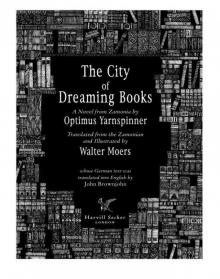 The City of Dreaming Books
The City of Dreaming Books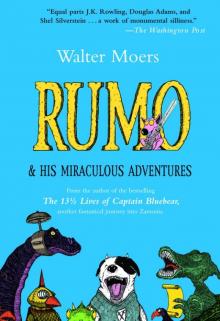 Rumo: And His Miraculous Adventures
Rumo: And His Miraculous Adventures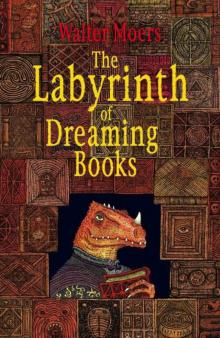 The Labyrinth of Dreaming Books
The Labyrinth of Dreaming Books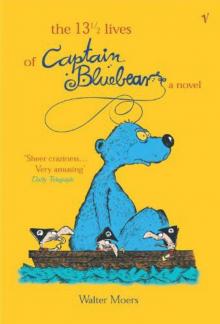 The 13.5 Lives of Captain Bluebear
The 13.5 Lives of Captain Bluebear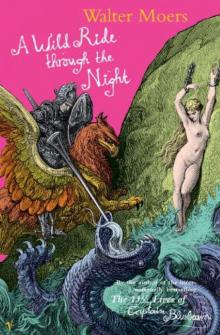 A Wild Ride Through the Night
A Wild Ride Through the Night